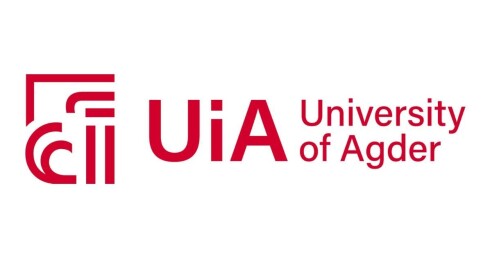THIS CONTENT IS BROUGHT TO YOU BY THE University of Agder - read more

Speech-to-text tools in classrooms: What are the benefits and challenges?
"Teachers must become more aware of why they are using technology in the classroom," researcher says.
In recent years, there has been a heated debate about whether technology is being excessively used in Norwegian schools. Are tablets and smart boards displacing traditional teaching methods - and if so, is that a problem?
Discussions about new tools tend to be polarised and lack nuanced perspectives, Marianne Engen Matre notes.
She is an associate professor at the University of Agder's Department of Education.

“Teachers should be more mindful of the reasons for introducing technology in the classroom. What are the consequences of using the technology? And what are the consequences of not using it?" she says.
Matre expresses a desire for a debate on the advantages and disadvantages prior to the adoption of such new tools.
Burdened with assistive technology
Matre has conducted research on speech-to-text in lower secondary education. These are tools where a computer program transcribes what the pupils say.
The use of speech-to-text is not included in any curriculum. Pupils with documented needs are allowed to utilise this technology during exams.
“Previous research shows that this technology does not significantly enhance learning to read and write, but it can be an aid for those who find it difficult,” says Matre.
But when only students with learning disabilities have access to technology, a stigma is attached to it.
Matre explains that individuals often prefer to struggle with hearing in class rather than wear a visible hearing aid, highlighting a common human tendency to prioritise fitting in over learning.
“But now this technology is available to everyone through a button in Word, whereas before you had to apply to assistive technology centres,” she says.
Became more linguistically aware
The researcher found several advantages in using the tool. Not surprisingly, it could help those who encounter challenges when writing texts.
“A pupil with dyslexia said that he usually had to simplify his text for him to be able write it. Rather than ‘documentary’ he would write ‘film’, for example. He was very satisfied with this tool,” says Matre.
In this way, speech-to-text technology made the pupils more equal. Teachers were able to group pupils who typically produced a lot of text with those who had difficulty with writing.
“The pupils also became more aware of oral and written language. Some things can be said, but can you write them in a text? That made the Norwegian teacher happy. It led to discussions about genre awareness," says Matre.
The tool could also be useful for students who wrote a lot. These could express their thoughts without stumbling over spelling or getting tired of typing.
Frustrations with the technology
But there were also several disadvantages. The transcribed text was often unreliable, occasionally completely wrong. This required the pupils to spend considerable time editing, which could be a challenge for those with reading and writing difficulties.
“We saw that it wasn’t some miracle cure. There's a lot of technique you have to learn to write in this way. And once you have learned to write in one way, it can take time to learn another way,” says Matre.
The pupils used the technology together in their classrooms, or in smaller groups. Some pupils found it embarrassing to speak out loud. They felt exposed when others heard their work in progress.
Frustration also arose from technical aspects. In some cases, they would read the text out loud while dictation was turned on, so the program would repeat the transcription. Other times, the dictation turned off after 20 seconds of inactivity without them noticing.
A bigger problem is that those who did not have urban dialects experienced inferior results when using speech-to-text technology.
“Those who had distinctive dialects had to conform to the Kristiansand dialect, while those who used the Eastern Norwegian dialect achieved even better results. That's quite problematic in an educational context,” says Matre.
Like with other technologies, Matre suggests a more nuanced approach to the use of speech-to-text tools in schools.
“We cannot simply determine whether or not the tool works. There are many different contexts in which it can be used, and it will be effective in some but not in others. We must also reflect more on whether or not dictation should be used in the Norwegian subject,” she says.
Reference:
Matre, M.E. Speech as a writing tool: An exploratory study of speech-to-text technology in lower secondary education, Doctoral dissertation at the University of Agder, 2024.
———
Read the Norwegian version of this article on forskning.no

This content is paid for and presented by the University of Agder
This content is created by the University of Agder's communication staff, who use this platform to communicate science and share results from research with the public. The University of Agder is one of more than 80 owners of ScienceNorway.no. Read more here.
More content from the University of Agder:
-
This researcher has helped more economics students pass their maths exams
-
There are many cases of fathers and sons both reaching elite level in football. Why is that?
-
How we used plants to protect ourselves from evil
-
What is it like for nurses to promote health behind bars?
-
This can make life easier for new maths teachers
-
Norwegian women were burned at the stake here




































